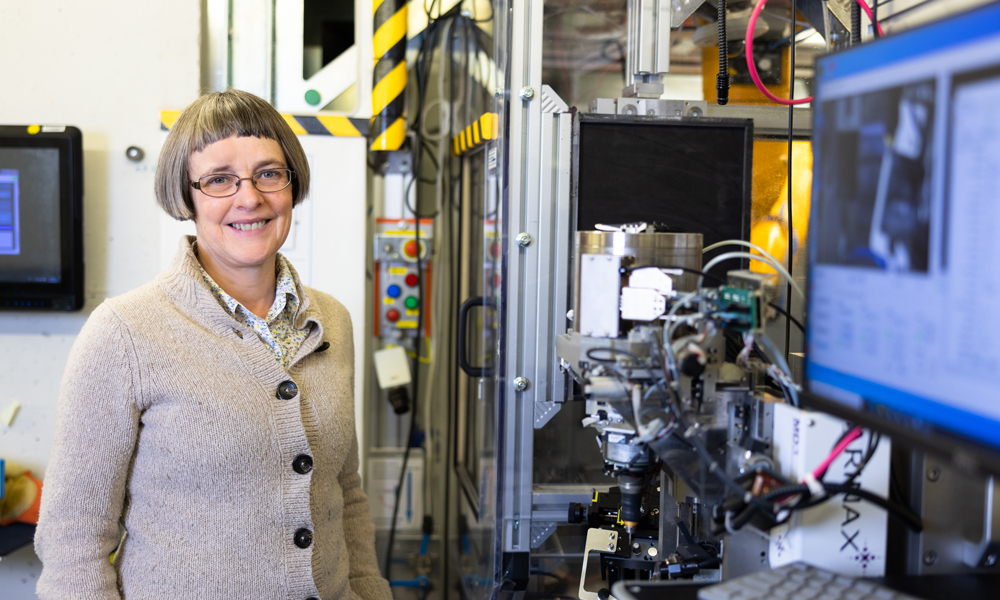
Molecules to Ecosystems: Liz Duke on X-ray imaging
Liz Duke talks about her work on developing X-ray imaging, a technology new to EMBL, and how it can support research of other EMBL groups

Hard X-ray biological X-ray imaging is an emerging technology that uses high energy X-rays to image tissues or even entire organisms at high resolution. The technology will play an important role in EMBL Hamburg’s future service portfolio and be a valuable addition to EMBL’s structural biology and imaging services, which enable the scientific community to study life on multiple scales and thereby answer fundamental questions in biology. With its presence at two world-leading synchrotron facilities at Grenoble and Hamburg, EMBL is in a unique position to exploit the opportunities offered to the life sciences by X-ray imaging and use its expertise in beamline sample preparation and automation and high-content image analysis to apply this technology in the life sciences. Team Leader Liz Duke talks about her plans to establish X-ray imaging at the P14 beamline at EMBL Hamburg.
As a result of the Programme, what do you expect to be doing differently at EMBL in 12 months?
I’ve only recently arrived at EMBL and am establishing a technology new to EMBL (X-ray Imaging) that matches a brand-new area of the Programme’s scientific services plans. So, this is a perfect opportunity. As a scientist whose focus is on developing new methods and who is always on the lookout for new samples to image I am hopeful that more novel samples will be imaged with X-rays. Then who knows what we might discover!
… in 24 months?
I hope that X-ray imaging will be firmly established in EMBL’s technology arsenal and many more scientists will be exploring how it can be used to answer key biological questions. It’s also key that access to X-ray imaging is not just for EMBL but available to all who have questions that can be answered using X-ray imaging technologies.
How important do you think collaboration is to achieving your goals?
For me collaboration is essential. Everything I have achieved in my career has been as a result of collaboration. A wonderful aspect of being a methods developer is that my work is collaborative. I’m open to working with anyone who is interested in trying out X-ray imaging.
If you could have coffee with three famous scientists who would they be, and why?
I would love to invite Maria Skłodowska-Curie, Rosalind Franklin and Ada Lovelace around to my garden back in the UK for afternoon tea. All are inspirational but I find Maria Skłodowska-Curie’s achievements particularly, given all the challenges she faced, phenomenal. And both Rosalind Franklin and Ada Lovelace were taken far too young. So, if I could bring them back for tea, maybe they could set up a lab in my garden and who knows what amazing discoveries would result particularly with modern X-ray technologies and the phenomenal computing power that they would have access to!
What has been the biggest challenge in your career thus far, and how did you overcome it?
Without a doubt moving countries during a global pandemic when everywhere was in lockdown has been probably the biggest challenge I have ever faced. And how did I overcome it – well I would say it’s most definitely a “work in progress”.
Find out more
Learn more about the new EMBL Molecules to Ecosystems Programme and the Scientific Services plans.


